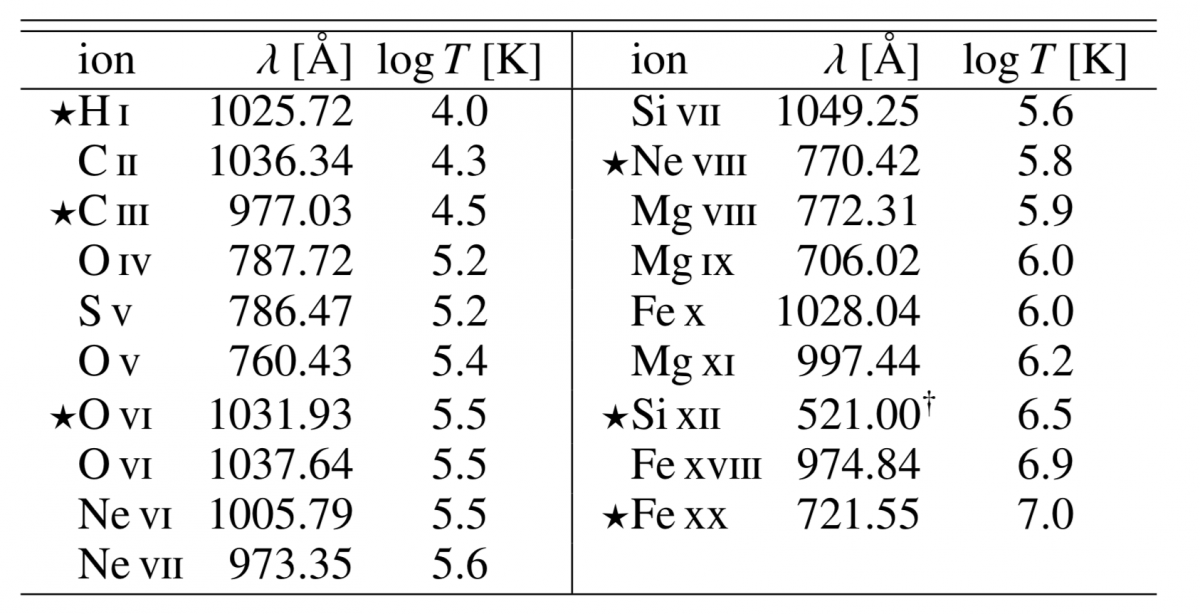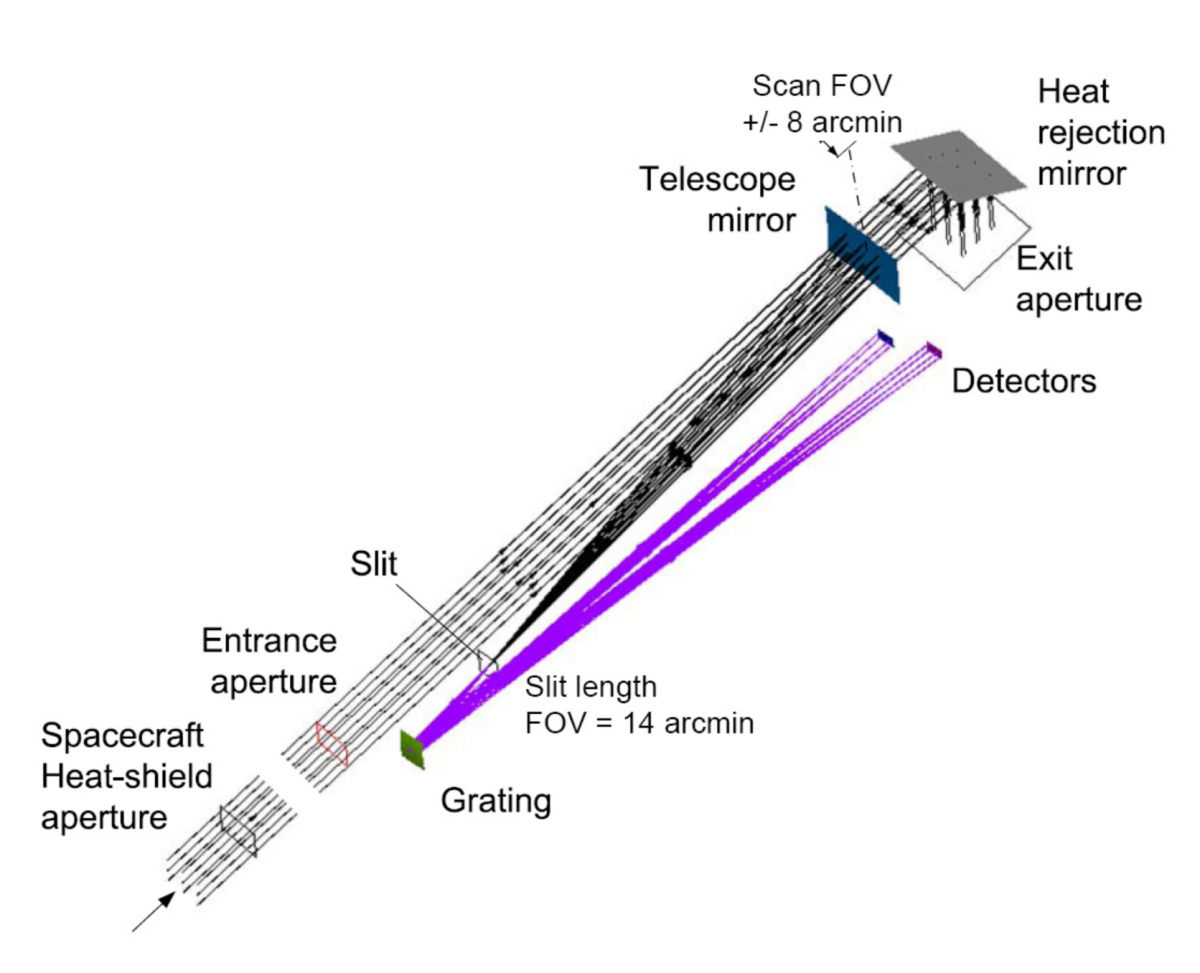The Spectral Imaging of the Coronal Environment (SPICE) instrument will carry out extreme ultraviolet imaging spectroscopy at high resolution. This remote-sensing instrument will allow investigation of the plasma properties of the different layers of the Sun’s atmosphere, the chromosphere and the corona.
In particular, it will provide quantification of the physical state (temporal signatures of temperatures and density) and the composition of the plasmas in source regions of outflows and ejection processes. This will be of high importance for the understanding of the link between the solar surface and atmosphere properties and those of the heliosphere.
SPICE is a European-led instrument, with several countries (United Kingdom, France, Germany, Switzerland, USA) contributing to the hardware. The Consortium is also open to scientific contributions of researchers from all over the world.
Characteristics of SPICE for scientific exploitation:
SPICE has two EUV wavelength passbands, 70.0 – 79.2 nm and 97.0 – 105.3 nm. These two passbands are dominated by emission lines from a wide range of ionized atoms of H, C, O, N, Ne, S, Mg, Si, and Fe, formed in the Sun’s atmosphere at temperatures from 10,000 to 10 million K. As such, SPICE will provide a complete temperature coverage from the low chromosphere to the flaring corona. A selection of representative lines over the entire temperature range is given below:

SPICE will also provide detailed remove composition diagnostics of First Ionization Potential (FIP) for high and low FIP ion species, as well as ions with different mass to charge (M/q) ratios. By working hand in hand with the in situ instrument SWA (Solar Wind Analyzer) aboard Solar Orbiter, which will measure the in-situ composition of the solar wind streams, both instruments will help understand how the composition evolves from its solar conditions to the interplanetary conditions.
*************************************************
Design features
The solar light is collected by a single-mirror telescope. The instrument entrance aperture is at the front of the SPICE optics box.

This aperture sizes approximately 4x4cm, and has a sliding door. Before reaching this aperture the solar beam is restricted by the heat-shield feed-through baffle, which extends to approximately 30cm ahead of SPICE, and this restricts the angular range of illumination and so also the solar heat load onto the SPICE aperture and door. In science observations the instrument takes multiple exposures, for a given selected slit in the spectrometer, at either fixed view position on the sun, or at a range of spatial scan positions (in the East-West direction) across a region of the Sun.
- Telescope type: Single-mirror off-axis paraboloid operating at near normal incidence
- Mirror characteristics: 43x43 mm2 aperture area (physical mirror size 103x103 mm2), 622 mm focal length, λ /20 rms figure, <2 Å rms micro-roughness, B4C coating
- Entrance aperture at the front
- Baffles
- Heat rejection pre-slit mirror in front of the slit
- Slit assembly: linear translation, 4 slits: 2′′ , 4′′ , 6′′ , 30′′ width
- Single toroidal variable line space (TVLS) grating, ruling density = 2400 lines/mm
- ±0.5 mm focus adjustment along telescope chief ray
- Detector assembly with conductive cooling, 2 intensified APS detectors, 1024×1024 arrays
- KBr coated microchannel plates
Other features of the SPICE instrument are related to proximity to the Sun. Such features include: use of dichroic coating on the mirror to reject the majority of the solar spectrum by transmitting it through the instrument and back into space, particle-deflector to protect the optics from the solar wind, and use of data compression due to telemetry limitations. More information can be found here
